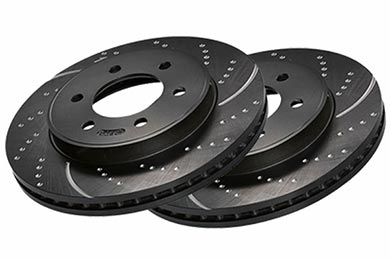It’s not until the brakes stop working or the wheels begin making a screeching noise that most drivers give the brakes any thought at all. Since the braking system is mostly concealed from view, and only a careful driver can identify if there is a problem, just understanding that there may be a problem with the braking system is already a challenge for some. The purpose of this manual is to teach you the best way to go about purchasing brake rotors.
The function of brake rotors
When you use the brakes, the smooth, visible part of your wheel known as the brake rotor helps to slow down or stop your car. As the brake pad grips the rotor’s smooth surface, friction is generated that slows or stops the vehicle. In doing so, a great deal of heat is generated, which must be dissipated should the braking system fail. When brake rotors wear down, they produce a high-pitched squeal because the metal surface has warped due to the extra heat.
Categories of brake discs
It’s likely that you’ve seen, on a visit to the car parts store, that there are several variations of brake disc. Some rotors include slots, whereas others feature drilling. The majority of the rotors used as brakes are plain and have no grooves. These drills and slots are there to aid in quick heat removal after the brake is applied. Consequently, the level of braking activity while driving will determine the brake rotors you choose. The brakes will be used more often by a driver in rugged terrain than by one on the freeway.
Choosing brake rotors that are suited to the environment
Brake rotor selection is heavily influenced by the kind of road surfaces you anticipate driving on most often. Slotted brake rotors or traditional smooth rotors perform better in muddy conditions. Since a result, it is important to avoid having the brake rotors drilled, as this might cause mud to get lodged in the holes. Because of this, the brake rotors can’t release heat as efficiently as they should, hence slotted or smooth rotors are preferable.
However, drilled and slotted rotors are optimal if you are a racing enthusiast who drives on relatively flat terrain and does a lot of braking. Since racing generates far more heat than everyday driving, the braking systems of most F1 drivers’ vehicles will get quite hot to the touch during a race. Drilled or slotted rotors are optimal for rapidly dissipating this heat.
The components of brake rotors
Brake rotors are most often crafted from iron, steel, or ceramic. Iron is suited for bigger vehicles due to its low cost and increased weight. In spite of its inability to disperse heat as well as steel rotors, iron brake rotors are more dependable and long-lasting. Steel rotors are better at dissipating heat, but they may readily deform under extreme conditions like high pressure and high temperature, resulting in the high-pitched squealing noise that is characteristic of faulty or worn-out rotors.
Poor stopping ability
Stopping with a grinding or screeching sound? Is the wheel shaking or does the brake pedal throb? The disc rotors have probably been lost. Take a look at the clip to learn more about when and why your car’s brake rotors may need to be replaced.
The brake disc, a metal plate attached to the axle, is an essential part of the braking system. When the brake pedal is pressed, the brake pads are forced against the metal plate, where they generate enough friction to bring the car to a halt.

